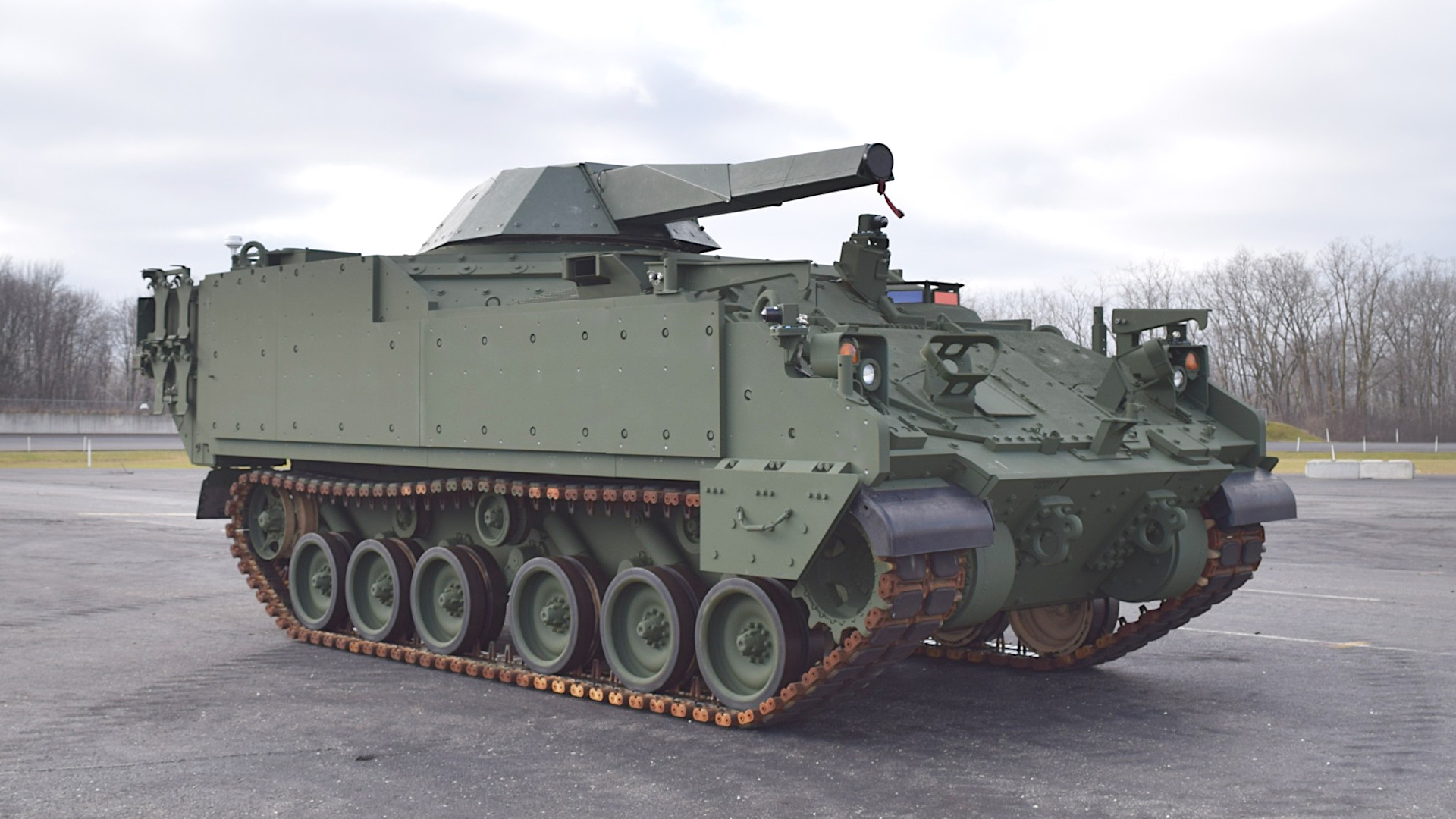The U.S. Army now has a prototype of a variant of its tracked Armored Multi-Purpose Vehicle with an armored turret armed with a 120mm rapid-firing mortar. The combination offers additional protection and much greater flexibility over mortar carrier vehicles now in Army service, and is a general capability it has been interested in acquiring for years now.
BAE Systems announced yesterday that it had delivered the new mortar turret-equipped Armored Multi-Purpose Vehicle (AMPV) prototype to the Army for further evaluation. BAE Systems is the manufacturer of the AMPV. Patria in Finland, in cooperation with Norway’s Kongsberg, supplied the NEMO turreted mortar. NEMO, a contraction of “NEw MOrtar,” was developed in the late 2000s.

The NEMO-armed AMPV variant makes use of an External Mission Equipment Package (ExMEP) that BAE has developed, which consists primarily of a new top plate, which allows for the relatively rapid integration of various turrets. The company has also previously shown an AMPV configured for short-range air defense with a turret armed with Stinger short-range heat-seeking surface-to-air missiles and a 30mm automatic cannon.

The U.S. Army currently has tracked mortar carriers based on the M113 family of armored personnel carriers, as well as ones that utilize the 8×8 Stryker wheeled armored vehicle design. Both of these mortar carrier vehicles have 120mm mortar tubes mounted inside their rear hulls. To employ the weapons, the crews must first open large hatches on top of the hull. This takes time and also exposes the crew to enemy fire.


The Army is now in the process of acquiring AMPV mortar carrier variants to replace its M113-based types that have the same general configuration.

The crew of a mortar carrier vehicle with a NEMO turret can employ the weapon without having to ever leave the vehicle and the protection it offers. With no large hatches to open or close, the time it takes to get the mortar into action, as well as to it get it back into a traveling configuration to move to another location, would also be lessened. Furthermore, the turret makes it easier for gunners to switch from engaging one target to another, in any direction, and offers a direct-fire capability that existing Army mortar carriers lack.

In addition, the Army’s existing mortar carrier vehicles all use 120mm mortars that have to be manually loaded. NEMO features an autoloader that has a demonstrated ability to fire a three-round burst in just 12 seconds and up to 10 rounds every minute.
NEMO comes along with a heavily automated fire control suite that allows it to conduct “Multiple Rounds Simultaneous Impact (MRSI) fire missions” where up to six rounds “hit the target simultaneously,” according to Patria. The company says the current version of the system has extensive networking capabilities so that targeting information from off-board sources can also be readily utilized.

NEMO’s automated fire control system gives it the ability to fire on the move, something current Army mortar carrier vehicles can’t do.

NEMO should also be able to use most, if not all of, the Army’s existing 120mm ammunition types, including precision-guided types. There has also been talk about launching loitering munitions and drones from 120mm mortars in the past.
“Handing this remarkable capability over to the Army for evaluation is an important step in creating broader multi-purpose options for Soldiers to maintain combat overmatch on the battlefield,” Bill Sheehy, BAE Systems’ AMPV program director, said in a statement yesterday. “The AMPV Turreted Mortar prototype was born from a capability discussion we had with the Army in 2022 — the same year ExMEP was conceptualized with industry partners, and we look forward to its evaluation.”
Though BAE says discussions about the NEMO-armed AMPV only date back to 2022, the Army has been looking at acquiring a turreted mortar system like this for years now. In 2018, the service put out a contracting notice expressing interest in a Future Indirect Fire Turret (FIFT) that could be integrated onto Strykers and other armored vehicles. The War Zone noted at that time that the FIFT requirements aligned well, though not perfectly with NEMO’s capabilities.
The acquisition of AMPVs with NEMO turrets could open up a path for the Army, or even other branches of the U.S. military, to field those mortar systems, and not necessarily only in mobile, ground-based configurations. Patria already offers a containerized version of NEMO that can be fired from various trucks and boats, as well as employed from fixed positions on land. The U.S. special operations community already uses fixed, turreted mortar systems for forward base defense. The NEMO turret can also be directly integrated onto naval vessels, including smaller ones used in littoral operations.

The Army’s acquisition of the prototype AMPV with the NEMO turret also comes amid discussions about what role heavy armored formations are likely to play in the future. There are no indications that the service is looking to abandon tanks and other heavy armored vehicles like the AMPV. However, an Army Science Board study released last year raised several questions about the value of such assets in future high-end expeditionary and distributed scenarios, especially potential operations across the Pacific against China. You can read more about that study’s conclusions here.
The Army is now set to “run the AMPV Turreted Mortar prototype through rigorous field evaluations to mark its capabilities against what Soldiers would require in [sic] the battlefield” in the coming months, according to BAE.
Altogether, the Army has a clear interest in a turreted mortar system like NEMO. Whether the service ultimately acquires NEMO turrets, and what platforms it might integrate them on, remain to be seen.
Contact the author: joe@twz.com
